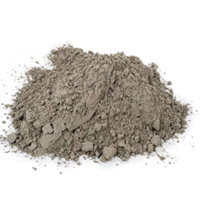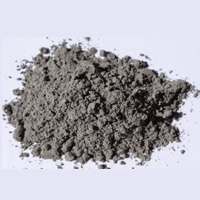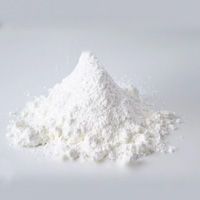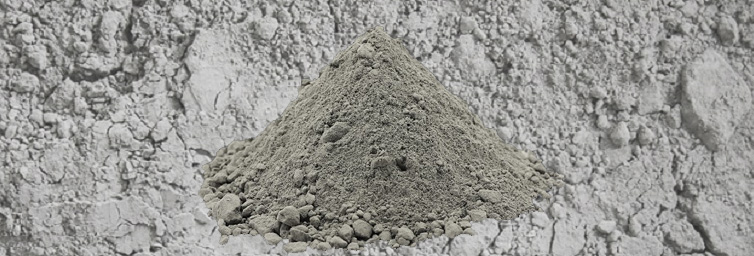Types and Grades of Portland Cement
Ordinary Portland cement is available in three different grades in India as 33 grade (IS: 269-1989), 43 grade (IS: 8112-1989) and 53 grade (IS: 12269-1987).
The numbers 33, 43 and 53 represents 28-day compressive strength of cement-mortar as 33 MPa, 43 MPa and 53 MPa. The strengths are obtained from standard tests on cement-sand mortar specimens.
All the grades are produced from the same basic materials, but higher strength is achieved by increasing the tricalcium silicate content and also by finer grinding of the clinker.
Indian Standard Code (IS: 456: 2000) permits the use of the following Portland cement for specific types of work.
Ordinary Portland Cement (OPC)
In Ordinary Portland Cement grades of 33, 43 and 53 are only permitted. These types of cement are most commonly used in general concrete construction.
Rapid Hardening Portland Cement (RHPC)
This cement is similar to OPC, in which the percentage of Tricalcium silicate is more, and less Dicalcium silicate and ground more finely. It has the quality of attaining high strength in a short period of time and preferred for construction purposes where speed is of importance.
Portland Slag Cement (PSC)
This cement is made by inter-grinding Portland Cement clinker and granulated blast furnace slag. This cement has high resistance to sulphates, and it is suitable for environments exposed to sulphates.

Portland Pozzolana Cement (PPC)
The pozzolanic materials used in manufacturing are Fly ash and Calcinated clay. These cements react with water due to the presence of calcium hydroxide liberated in the hydration process. It gains strength relatively slowly and hence needs more curing time. Due to this, this cement is preferred where time is not of importance like in mass concreting.
Hydrophobic Portland Cement (HPC)
Hydrophobic is the water-repellent property of the material. This cement is manufactured by inter-grinding Portland cement with 0.1-0.4% of oleic acid and stearic acid. This cement has a hydrophobic quality which facilitates its storage for longer periods in extremely wet climatic conditions.
Low Heat Portland Cement (LHPC)
This cement contains low qualities of tricalcium aluminate and high qualities of dicalcium silicate. The hydration process is slow compared to PPC and is desirable for mass concreting purposes like gravity dams. As it possesses slow strength gain, care should be taken while removing the formwork early.
Sulphate-resisting Portland Cement (SRPC)
This cement contains about 5% of tricalcium aluminate and is ground finer than OPC. This cement is highly sulphate resistant and is used in locations where sulphates are present in the atmosphere or soil.
Other Types in Cement
High Alumina Cement
This cement is obtained by grinding high alumina clinker and has a long initial setting time, high ultimate strength, high resistance to the action of acids and high temperature. This cement is used for special structures that require imperviousness and corrosion resistance like in furnace insulation, refractory concrete.
Masonry Cement
This cement is obtained by inter-grinding a mixture of Portland Cement clinker with non-pozzolanic materials, gypsum and air entraining plasticiser. It contains some physical properties like slow hardening, high workability and high water retentivity, which becomes very suitable for masonry work.
Oil-well Cement
It is hydraulic cement which contains retarders in addition to coarser grinding and is suitable for high pressure and temperature.

Quick-setting Cement
This cement is specially made for under-water concreting. It is obtained by adding a certain quantity of aluminium sulphate and reducing the quantity of gypsum and made into a fine powder.
Expanding Cement
This type of cement is produced by adding an expanding medium like sulpho-aluminate and a stabilising agent to ordinary cement. This cement is used for repairing concrete surfaces as it expands during curing.
Acid-resistant Cement
It is used in the chemical industry as it possesses acid-resistant quality, which is obtained by adding materials like quartz, sodium silicate and sodium fluosilicate to the cement.
White Cement
This cement is burnt by oil and does not contain colouring agents such as iron oxide, manganese oxide or chromium oxide. This cement is used for floor finish, plastering, pointing of masonry, manufacture of precast stones, tiles, runaway markings and colour cement.

Coloured Cement
Initially mixing colouring materials can provide the desired colour for cement. It is used for external finishing of walls and floors, manufacturing of tiles and precast stones, garden paths, swimming pools and tennis courts.
Check Out: Types of Cement Concretes used in Construction
Technically Reviewed by Rajesh Pagadala, MS, Founder & CEO - BuildersMart. Written by Vani paspula, Content Manager.

















[email protected]
posted on Jul 31, 2021 10:23:08 AM